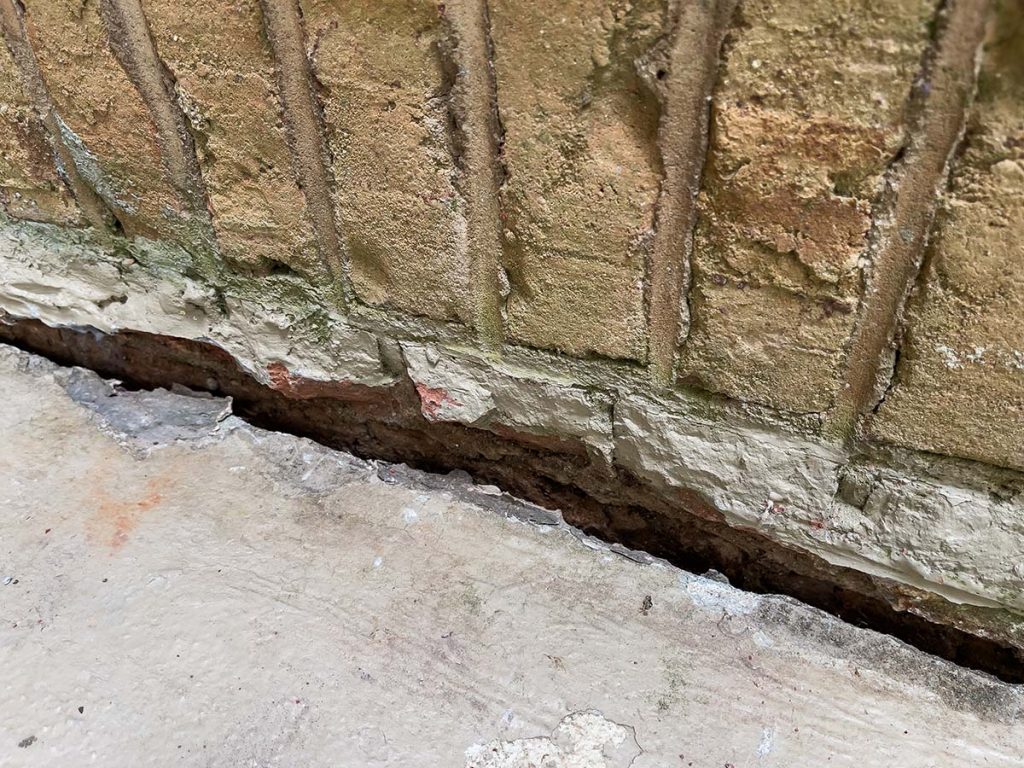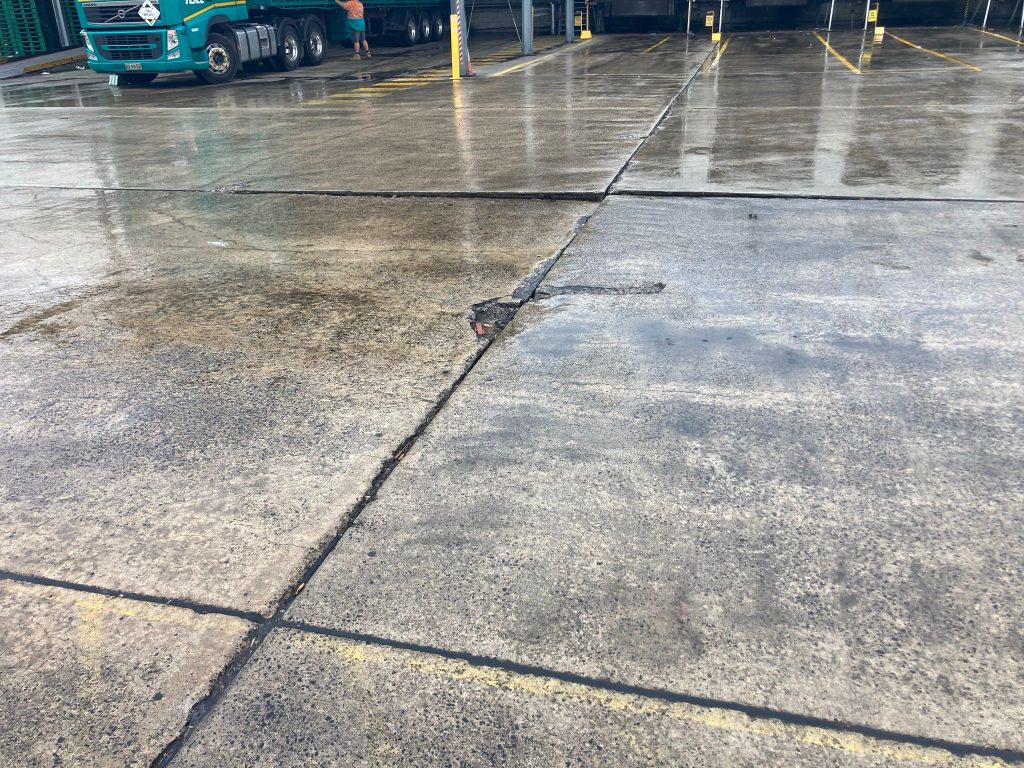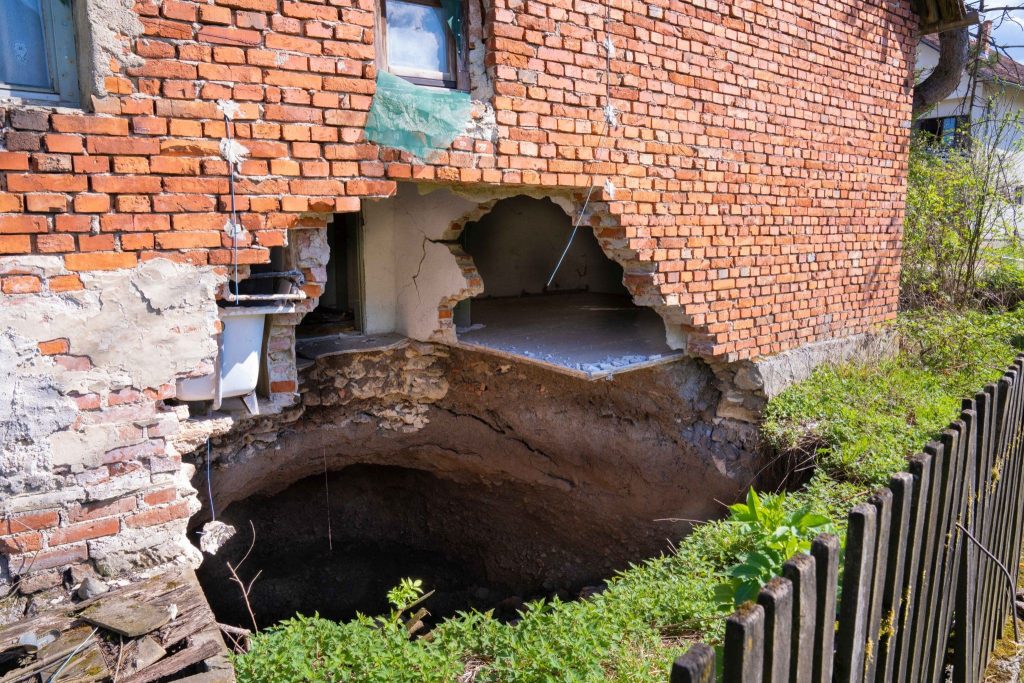If you have heard people discussing sinking foundations, you may have conjured up a raft of images. It isn’t as dramatic as a home being swallowed whole by a sudden sinkhole. It isn’t as obvious as a ship starting to sink either. It’s a slow-motion version of both in many ways because while water and shifting earth are common causes, you won’t see a dramatic shift.
What Ground Changes Cause Foundation Sinking?
Whether it’s foundational, structural, footings or slabs, there are a variety of causes for sinkage. When you experience a drought or flood, it can change the condition of your foundation, which can undermine its bearing capacity. While droughts shrink the ground, causing subsidence and settlement, floods also cause subsidence and settlement by soaking and weakening the area. The ground condition can also be dramatically changed by long-term water course change. Those are some obvious causes, but what about the factors you never think about?
- Construction
Localised activity can wreak havoc, but so can activity in the surrounding areas. This construction can affect the water table, which alters the ground condition. It can also cause vibrations or impact that changes the structure and ground.
- Tree roots
Tree roots alter the ground condition and impact the moisture content as well. These factors can destabilise the ground, which can affect your foundation.
- Leaking Water Services
Ageing pipework will deteriorate and start leaking if it isn’t maintained or upgraded. Sinking can also cause damage to pipework which can lead to further subsidence. If the original water services weren’t installed properly or there has been poor workmanship along the way, this is a significant factor. Likewise, soldering and glue can fail over time.
- Vibrations
Any change to ground conditions can cause subsidence, including heavy local traffic and underground tunnelling.
- Mine subsidence
It is not uncommon for properties located above active or abandoned underground mines to experience subsidence due to underground tunnelling weakening the foundation below the property.
- Natural effects
Properties can sink due to the natural effects of sinkholes or earthquakes, especially if liquefaction occurs.
The soil type around (and under) a building is called the foundation, and changes to it can affect the structural capacity of a building’s ability to support its slab or footing. This can impact the building or structure’s stability. Foundational changes include moisture content, volume, compaction, density, and changes in bearing capacity. You need to concern yourself with reactive clay soil behaviours and volumetric changes in fill and founding soils being unable to bear the required load capacity.
What To Do If You Spot Foundation Sinking?
Step one is to determine what is causing the issue. You need an expert for this step, someone specialising in raising and re-levelling structures. Raise + Relevel (www.raiseandrelevel.com) are experts in subsidence-related solutions. Get in touch today to discuss your options. You can also call R&R on 1300 053 835.
You need to know that your foundation is no longer stable. You may have foundation problems if:
- Your windows and doors stick when you try to open or close them. Or, they’re uneven to the point you need to use something to wedge it open or closed. Slabs or footing appear to have settled or sunk, which can be identified by the likes of ponding water, gaps between skirting and floorboards etc
- Cracking in your exterior foundation is a sign of foundation issues.
- It might be a foundation settlement issue if you see cracks in your gyprock walls, particularly around sticking or uneven windows and doors. These issues are caused by foundations that have shifted from their original position and are uneven. When one side settles or sinks at a different rate, it strains the structure’s overall stability.
The materials we use to build homes are not flexible; they aren’t capable of shifting or adapting to the changes in the foundation, which leads to a need for foundation repair.
Hence it is imperative to address and repair the foundation ground to treat the cause. Replacing footings via traditional underpinning (without addressing the ground bearing capacity) only addresses the symptoms.
Once the experts have determined the cause, you can move forward with the most appropriate long-term solution. The most important solution is strengthening the home’s foundation to increase its bearing capacity to ensure it can support the structure. Polyurethane resin injection treatment is a low-impact, cost-effective solution.
A standard solution is to raise and relevel the concrete slabs or footing. This also requires the use of polyurethane resin. Using keyhole injections, the structural resin is used to densify the foundation to lift the slab or footing.
When choosing a contractor to handle foundation damage, whether major or minor issues, look at the supervisor’s experience. The person who handles the work on your property is the key, so they should have a Cert III in Civil Construction or Foundations at a minimum.
The right solution for your structure will depend on the severity of the damage and the type of soil. A team member will visit to assess your case and provide you with a solution to move forward.
Raise + Relevel (www.raiseandrelevel.com) are experts in subsidence-related solutions. Get in touch today to discuss your options. You can also call R&R on 1300 053 835.




